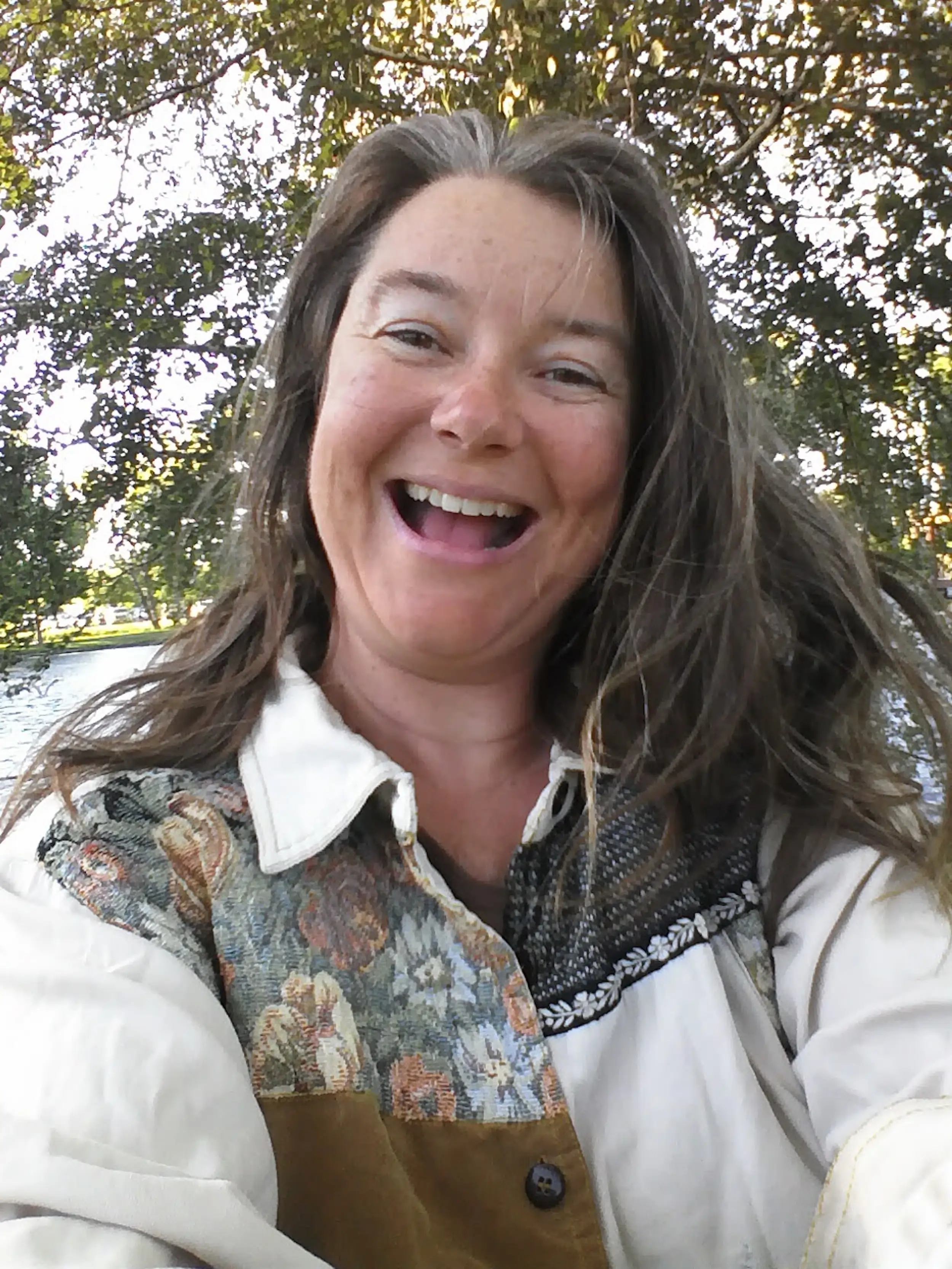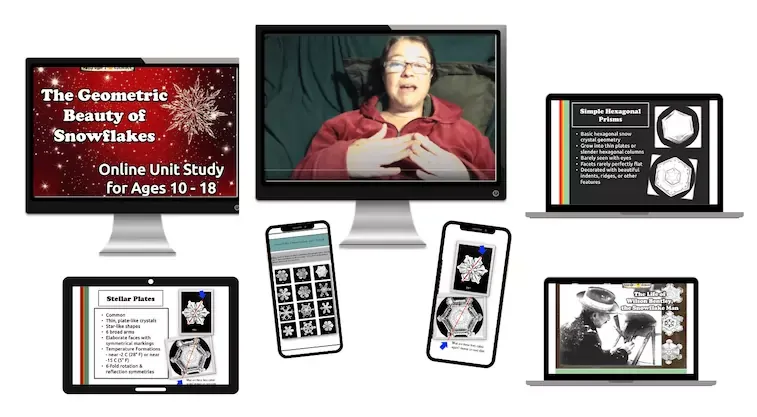How to Do a Wilson Snowflake Bentley Homeschool Unit Study
Studying the life of America’s first snowflake photographer, Wilson Bentley, affords ample homeschool and classroom science, math, art and history connections, or a thematic snowflake unit study.
Step 1: Introduce the Life of Wilson Bentley (1865 - 1931)
A thorough option to introduce students to the life of Wilson Bentley, affectionately known as the Snowflake man, is by using the homeschool course NatureGlo's Geometric Beauty of Snowflakes Online Unit Study or, the standalone curriculum DOWNLOAD HERE from NatureGlo's eScience Store. It's great for ages 8 and up.
Wilson Bentley was America's first snowflake photographer. He developed and perfected the technique for capturing frozen snow crystals with a simple frozen turkey feather and black velvet. He photographed the snowflakes using a microscope Jerry-rigged to an old bellows camera.
Step 2: Watch the Wilson Bentley Lesson Sampler from the Snowflake Video Below.
Get ideas for how to present the life and works of America's first detailed snowflake photographer, Wilson Alwyn Bentley from my brief sample lesson below, in which, I had live online homeschool learners joining me and interacting with the lesson.
Born during the Victorian era, Wilson Bentley lived from 1865 to 1931. The Victorian era is a very famous time period still intensely studied today. One interesting craze during the Victorian era was for people to arrange and display microscopic things for public entertainment.
My, have things changed for entertainment!
One such example of photomicrography, is that some people would collect diatoms (microscopic jewel-like algae) and arrange them in geometric fashion on a microscope slide.
See the image below.
This practice is very rarely done today and takes immense skill and patience. But one famous modern day diatomist, Klaus Kemp, has created such intricate diatomic works of art that just blows my mind.

Below we can see Wilson Bentley with his famed bellows camera hooked up to a microscope.
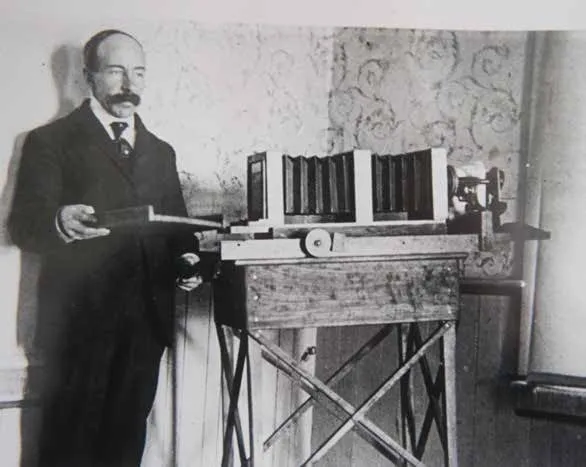
Wilson "Snowflake" Bentley was born in Jericho, Vermont. He acquired the nickname "Snowflake Bentley" because of his great passion for studying and photographing real snow crystals and sharing his photos with his local town, universities, and even the National Geographic.
Step 3 - Locate Jericho, Vermont on a Map
Where else have we heard of the name Jericho before? It was a famed city in the Bible right? Many towns in the United States are named after cities and towns from Israel. As a geography connection, invite your learners to locate Jericho, Vermont on a map.
Bentley was one of the first known snowflake photographers who perfected the snow crystal micrography technique. He would catch unmelted flakes on frozen black velvet.
It was very important that the surface in which he captured his snowflakes were as cold as the outside temperature. He made his first successful capture of a snow crystal and photographed it when he was 19 years old. He had been capturing and studying snow crystals when he was 15 years old.
It's not too too early for any youth to start studying snow crystals if they want to get into snow science. Indeed, it's a very specific science.
Snow crystal study belongs to meteorology (study of weather), hydrology (study of water) and geometry.
Step 4: Study the Snowflake Chart
Each snow crystal formation can be described geometrically. Have a look at the snowflake chart below created by Japanese physicist, Ukichiro Nakaya (1900 - 1962). Nakaya was the first known person to create artificial snowflakes.
Together with your learners, notice the geometric shapes in many of the snowflake types.
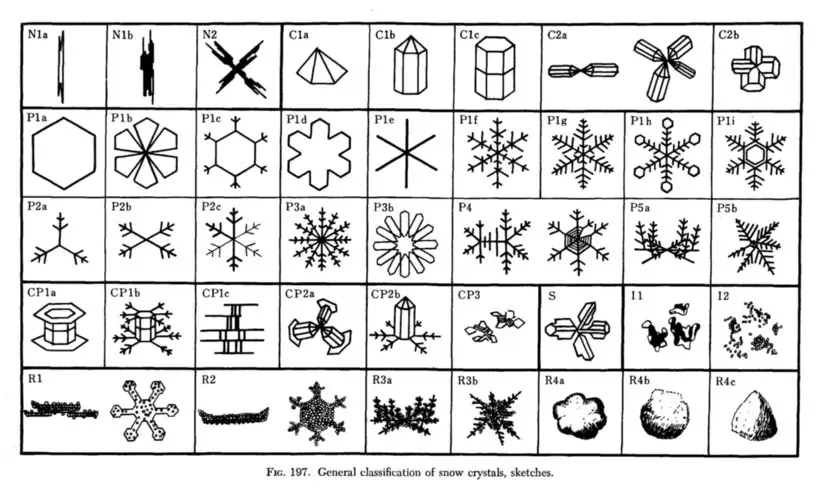
At age 15, Wilson’s mother gave him a microscope. He attached a bellows camera to a compound microscope to photograph snowflakes.
On January 15, 1885, after much trial and error, he photographed his first snow crystal. During his lifetime, he actually created over 5,000 snow images such as this one he photographed below.
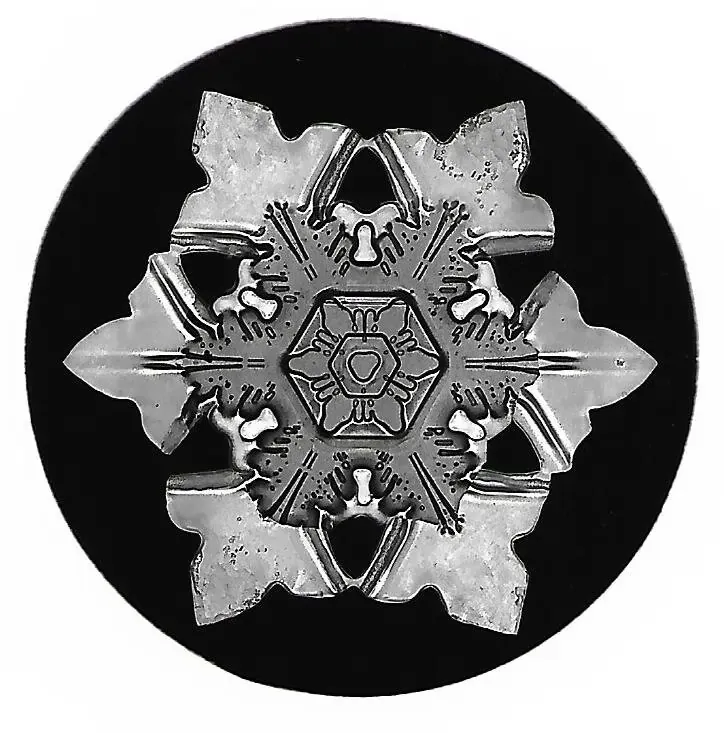
How did Wilson Snowflake Bentley catch the snowflakes?
Each crystal was caught on a blackboard or black velvet and then he would transfer the crystal with a turkey feather to a microscope slide.
Step 5: Learn to Capture a Snowflake Under a Microscope
Experiment for home or school: How to Capture Snowflakes like Wilson Bentley and Do a Snowflake Drawing
Materials:
- Black material, like velvet, or construction paper
- Magnifying glass
- Paint brush or long bird feather. A turkey feather is great. HINT: Try looking around your backyard or neighborhood or purchase some bird feathers at your nearest craft store. If you can't find any bird feathers, use a tiny paint brush.
- Student journals
Procedure:
- Before your next snowfall (if you get snow in your region), place the turkey feather and velvet outdoors in a box, for several hours or overnight until the materials are the same temperature the outdoors.
- Have your learners dress up warm and capture falling snow on cold or frozen black construction paper.
- Manipulate the snowflakes with the bird feather or paintbrush.
- Observe the snow crystals from an outdoor overhang so that you can duck in and out of it to prevent the snow from burying your observable snowflakes.
- Have your learners carefully observe the snowflakes, make sketches and write geometric descriptions of the snowflakes in their journals.
Accomplishments of Wilson Snowflake Bentley
Wilson was known for saying that snowflakes “are tiny miracles of beauty.” He also called snowflakes “ice flowers.”
At the end of the nineteenth century, Bentley's extraordinary snowflake research and photography work gained public attention from Henry Crocker of Fairfax the Vermont magazine. Crocker inherited Bentley's largest private photography collection.
Bentley wrote an article about how no two snowflakes are alike. It's not technically true as there have been some identical snow crystals found. There always seems to be rare exceptions in nature. For the most part, there are no two snowflakes alike.
Wilson wrote articles for magazines such as the National Geographic, Nature, Popular science and Scientific American. He published an entry about snow for the 14th edition Encyclopedia Britannica.
Wilson didn’t just photograph snowflakes, he also photographed various ice and natural water formations including clouds and fog. He was enthralled with studying many aspects of meteorology. Public interest grew in snowflake uniqueness through his photographs and his articles. Wilson’s magazine publications are the equivalent of how we do blogging and put up YouTube videos today.
I bet Wilson would have been a great YouTuber. In 1931 he published a book called Snow Crystals. That book was where I first got introduced to Snowflake Bentley's work!
When I began my own snow crystal study back in 2003, I checked out his book, Snow Crystals, from the University of Delaware. It’s illustrated with 2,500 of his remarkable snowflake photographs. I was so amazed with his pictures that I just had to share it with my students.
I brought the book, Snow Crystals, to my 4th and 5th grade classroom where I taught in a tiny 30-student private school in Newark, Delaware. I showed the pictures to the learners and they too were in awe.
Wilson's Bentley's photographs inspired my learners and I to go deeper in our study and together we learned to catch snowflakes similarly how Bentley did it. However, I didn’t have the technology to photograph the slides from a microscope.
One year, I had an online homeschool boy who took my MathArt live online class. He was able to successfully photograph his snow crystal filled slides by pointing his mother’s cell phone camera eye right into the microscope and it worked!
Step 6: Order NatureGlo's eScience Geometric Beauty of Snowflake Unit Study
Ready to go deeper on the life and work of Wilson Alwyn Bentley? I don't know of any study that's gone as deep as the Geometric Beauty of Snowflakes for kids of all ages.
The study is best suited for kids ages 8 and up, but, younger children often join in with older kids and enjoy the study at their level of understanding. I'm a strong proponent for age mixing, thus giving youth the opportunity to mentor younger children and learn from one another. But, that's a topic for another day.
ATTENTION HOMESCHOOL PARENTS:
Get NatureGlo's eScience Geometric Beauty of Snowflakes
Online Unit Study Superb for Ages 8+
ATTENTION TEACHERS:
Get NatureGlo's eScience Geometric Beauty of Snowflakes
PowerPoint and Activities BUNDLE at my Store
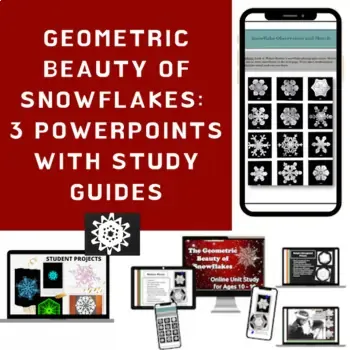

How My Students and I Captured and Studied Real Snowflakes
That same winter in 2003, I found out from books how to capture, preserve and view snow crystals under a microscope. At the time, I had eight moderately powered microscopes for my classroom.
From my garage on those cold winter weekends, I left a microscope along with some slides and clear plastic spray. During varying snow showers or storms, I rolled up my garage door, took out frozen microscope slides, went outside from the into the snowfall and captured several crystals on each slide.
After I collected the snowflakes on the slides, I brought them back into the cold garage, sealed and preserved my snowflake treasures with the plastic spray. I brought these preserved snowflake slides to school. My students and I would observe them under the microscope for hours!
I had my students make sketches and describe the snowflakes in their MathArt journals. Just before the holiday season, this activity afforded us hours of interactive, hands-on jubilee before school let out for our Christmas and New Year’s holiday break.
When we returned from our big holiday break, we enthusiastically resumed our snowflake unit study thus successfully beating the winter doldrums with winter wonderland learning excitement and zeal.
No more winter academic school drudgery blues for us!
On December 23rd, 1931, unfortunately, Wilson Bentley died of pneumonia at his farm after walking six miles in a blizzard to photograph snowflakes. That's pretty intense showing us just how dedicated he truly was to his work.
By the time Wilson had passed away, he had left behind an incredible legacy of 5,000 snow crystals, all of which are safely preserved today in various museums!
Kenneth Libbrecht is today’s most famous modern-day snowflake photographer and physicist at Caltech in California. Kenneth has said that Bentley's techniques for snowflake photography are mostly the same techniques still used today. However, Kenneth has the luxury of using a fancy high-tech camera hooked up to a microscope.
Libbrecht actually operates this setup from the back of his SUV. Libbrecht said regarding Wilson Bentley's work, “hardly anybody bothered to photograph snowflakes for almost 100 years.”
Jericho Historical Society, in Jericho, Vermont, has a collection of Bentleys photographs. His images have been digitized and organized into digital libraries. You can actually buy a DVD of all 5,000 of his snow crystal photographs from his website.
Conclusion
Doing a Wilson Bentley snowflake unit study is an inspirational way to learn through the winter doldrums. You can start your homeschool or classroom Wilson Bentley winter snowflakes unit study as early as November (or sooner if you get snow in October or even earlier) and sail right on through January.
During this snowy study, there are so many fun winter wonderland rabbit trails that you can take all the while covering your writing, history, geography, art, science, nature connection, and literature. Don't be afraid to take a break from the typical academics in favor of inspirational learning during the challenging holiday season and winter months ahead.
My learners and I have always marched our way through the winter season full of inspirational learning delight with this study. I invite you to join in the winter learning excitement and make it yet another winter season to look forward to rather than loathe.
This winter and for winters to come, enjoy exploring the glorious and exciting frozen, as Bentley called them, "ice flower" wonders of the natural world!
Talk soon,
NatureGlo
